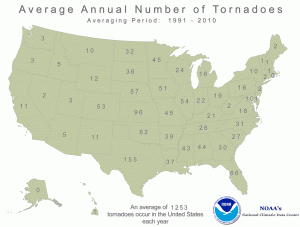News
Is there such a thing as tornado-proof?
Recent outbreaks of tornadoes in Nebraska, Kansas, and elsewhere in the Midwest leave no doubt that tornado season is well underway. Tornadoes are common weather features in North America, and the United States leads the world in tornado counts, with an average of more than 1,000 recorded tornadic events each year.

A tornado can develop anywhere on earth under the right atmospheric conditions (Antarctica is the only continent in which no tornadoes have been recorded), but North America’s so-called Tornado Alley is by far the most tornado-prone region in the world. So, if you’re building in Tornado Alley, how do you tornado-proof your structure?
Well, usually you can’t. Truly tornado-proof structures resemble bomb shelters more than they do buildings meant for daily use. Indeed, the National Wind Institute at Texas Tech University notes that a tornado-proof house would need to have
- Missile-resistant walls, roof, windows, doors, and garage doors to protect it from airborne debris.
- Structural elements and connections capable of withstanding 250 mph wind pressures.
- Construction that is more than 7.5 times as strong as that of a building designed according to conventional building code standards.
Tornado proofing is probably more expensive and troublesome than is necessary unless you are (1) building an above-ground bunker to protect the launch codes or (2) hatching an evil plan for world domination. If either of these describes your situation, then we’re confident you have far greater problems than wind loads.
For the rest of us, the best course of action is to design for straight-line winds according to the relevant local building codes. These codes already take into account such factors as the relative importance of the structure (Hospitals and power plants are more important than tool sheds and carports), local topography, and historical weather data. Considered together, these pieces of information serve up an accurate—and practical—picture of the wind loads most likely to cause failure.
Of course, those who live and work in Tornado Alley understand that it only takes one tornado to cause major damage. That’s why buildings in tornado-prone often have storm shelters to protect occupants in case a tornado does strike.
Very few buildings are truly tornado-proof. But with the right tools and a sophisticated understanding of the local climate, a wind-engineered structure will survive the wind forces most likely to cause failure.
